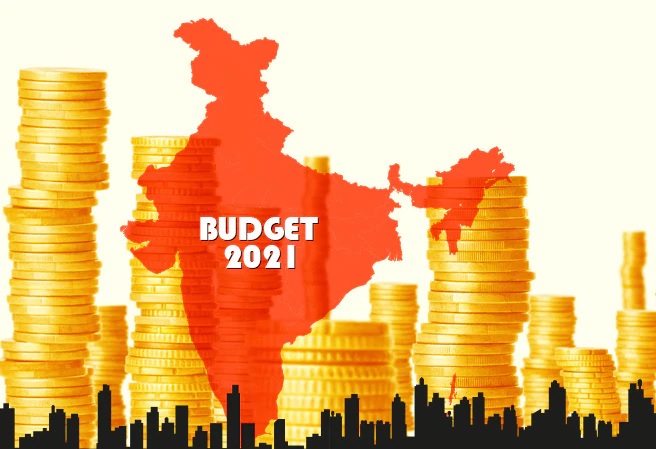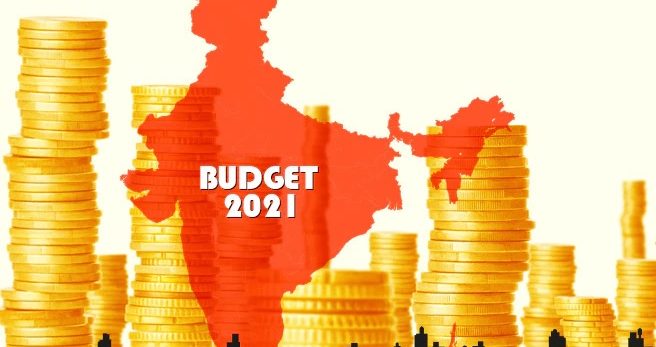
Budget 2021: Finance Minister Announces Key Initiatives For Enhancing Research, Skilling And Implementation Of NEP
Minister of Finance and Corporate Affairs Nirmala Sitharaman presented the Union Budget 2021-22 in the Parliament on Monday 1st February 2021. Minister Sitharaman outlined several important initiatives earmarked for the education sector including legislation to be introduced to set up the Higher Education Commission of India as an umbrella body with four separate vehicles for standard-setting, accreditation, regulation and funding, which is seen as a welcomed step towards the implementation of the NEP 2020.
Key Budget Highlights:
- More than 15,000 schools will be qualitatively strengthened to include all components of the National Education Policy and 100 new Sainik Schools will be set up in partnership with NGOs/Private schools/States. These will serve as exemplar schools in their regions, handholding and mentoring other schools to achieve the ideals of the Policy.
- Many cities have various research institutions, universities, and colleges supported by the Government of India and that in such cities formal umbrella structures will be created so that these institutions can have better synergy, while also retaining their internal autonomy. For this purpose, a Glue Grant will be set aside.
- Standards will be developed for all school teachers in the form of National Professional Standards for Teachers NPST under the initiatives on Education as part of NEP. This is aimed at enhancing the capabilities of teachers and will be followed by all 92 lakh teachers of the public and private school system in the country.
- There will be a complete shift from using assessments to not only judge the cognitive levels of the learner but also using it as an opportunity to identify the unique strengths and the potential of the child. To this effect, a holistic progress card is envisaged to provide students with valuable information on their strengths, areas of interest, needed areas of focus and thereby helping them in making optimal career choices.
- Exams will move away from rote-learning and students shall be tested on their conceptual clarity, analytical skills and application of knowledge to real-life situations.
- A National Digital Educational Architecture (NDEAR) will be set up within the context of a Digital First Mindset where the Digital Architecture will not only support teaching and learning activities but also educational planning, governance and administrative activities of the Centre and the States/Union Territories. It will provide diverse education ecosystem architecture for the development of digital infrastructure, a federated but interoperable system that will ensure the autonomy of all stakeholders, especially States and UTs.
- For children with hearing impairments, the Government will work on standardization of Indian Sign language across the country and develop National and State Curriculum materials for use by them.
- 750 Eklavya model residential schools to be set up in tribal areas. This would help in creating robust infrastructure facilities for our tribal students.
- The Government proposes to amend the Apprenticeship Act with a view to further enhancing apprenticeship opportunities for our youth. The existing scheme of National Apprenticeship Training Scheme (NATS) will be realigned to provide post-education apprenticeship, training of graduates and diploma holders in Engineering.
- With reference to the National Research Foundation, the outlay will be of INR 50,000 crores, over 5 years. It will ensure that the overall 24 research ecosystem of the country is strengthened with a focus on identified national-priority thrust areas.
- A new initiative – National Language Translation Mission (NTLM) will enable the wealth of governance-and-policy related knowledge on the Internet, being made available, in major Indian languages.
Stakeholder reactions to Budget 2021:
Kunwar Shekhar Vijendra, Co-founder and Chancellor of Shobhit University: “The announcement of the establishment of Higher Education Commission of India will not only facilitate the stakeholders but will ease out the complete business, especially in the Higher Education sector. I have been personally advocating for a knowledge grid for the country, that can be accessible to other institutions and especially in the case of private universities, it is expected that they create the same infrastructure as what is available in the nearby Government universities. This will result in knowledge creation, innovation and monetisation. ”
Dr Jawahar Surisetti, Advisor to Government: “It’s a budget with mixed reactions. In extraordinary circumstances last year the two major sufferers were education and tourism. Since the large scale effect of education is much larger, the focus on the education sector has been seen. In a gloomy past year, the only ray of hope has been the NEP2020 and the first two major signs of implementation appear in the budget.
Setting up 15000 schools or Adarsh Vidyalayas with good net connectivity, better infrastructure and improved teaching-learning processes. The second implementation is the allocation of funds for the National Research Foundation to foster a spirit of research in NEP. The coming of age for India in world education is IndSAT for bringing Asian and African students to India especially in higher education. Also, online education to the top 100 NIRF tankers seems a good step forward. The ease of bringing ECBs and FDI in education will boost the quality of infrastructure. But the boost for employment seems to be missing though 3000 crores have been allocated to skilling and internships for graduate engineers in local bodies have been mooted but these are minuscule measures when compared to the problem at hand.”
Dr Shrihari Prakash Honwad, President, Sir Padampat Singhania University: “Budget is on expected lines. There was a need to create an economics drive post COVID through government funding which is seen. COVID saw the government subsidising food and other factors, for more money it had to look at investors hence FDI concessions. Priority must be on creating income for those who lost or new faces on the job market. Income tax rebates to enhance income for those having an income is a dream which can be fulfilled only when government coffers are full and overflowing. Industry should also start spending to augment government spending so economic dreams of people come true. If this does not happen in the next two years, people would lose faith in industry-leading economic growth and would demand the PSU culture to be brought back.”
Sakshi Agarwal, Executive Director, Sage University: “After the announcement of NEP, this was the first Union Budget, NEP had received good reception. Schools will be qualitatively strengthened, skill development, foreign collaboration to benchmark skilled qualification are few good decisions. But curtail in the education budget should be reconsidered. The government should also work on digital infrastructure for uninterrupted teaching & learning, especially for rural students.”
Sneha Priya, CEO & Co-Founder, SP Robotic Works: “The NEP was a great step towards the betterment of our education platform in India; however it majorly depends on how well the implementation goes about. I think with this budget, there is a clear line of implementation with the first layer of 15000 schools which will then act as mentors. This definitely gives great confidence in the NEP being implemented well.
Another great inclusion is the Research and Development in Education by collaborating with many countries. It is highly essential we have the best practices of all countries implemented in our system and this is the right step towards that. With Japan’s technology and knowledge, hopefully, the online learning platforms will be strengthened. I am sure we could look at other South-East Asian countries and European education too, which gives a lot of emphasis on practical education and also a student’s mental growth without much stress.”
Rajita Kulkarni, President, Sri Sri University: “It was a declaration of Independence from the austerity economics dictated by rating firms. India took a bold pro-growth step in the form of this budget which focussed on expanding healthcare expenditure, the building of infrastructure and job creation. The best way to describe this budget would be – Revive, Revitalise & Renew.”
Trina Das, Founder & Chief of Growth, TAI: “I think amending the Apprenticeship Act – a focus towards degree apprenticeship programs can help create a new dimension for higher education that solves the skill gap problem, build employability skills, higher education financing and access to skill development. I did wish for some tax relief for education service providers and some support for institutions to implement the NEP but I am optimistic that the money allocated for education research will help a large number of students to pursue high-quality education in India. The Rs. 3,000 crore allocation to up-skilling and training Indian Engineering Graduates and Diploma recipients looks very exciting and promising to what we are doing at TAI school and I can also foresee the focus shifting from content learning to development of industry-ready skills as an impact.”
Shubham N. Chatterji, Head – Education and Academia, SAS Institute (India) Pvt Ltd: “From time immortal, Universities have been one of those places where ideas have transpired into inventions and innovations. I was glad to see our Hon. FM emphasize the value of Innovation, Research & Development and provide an outlay of INR 50,000 crore for the next five years towards this field. The National Education Policy is also an area that we hope gets addressed soon.”
Chocko Valliappa, Founder, HireMee: “Focus on Innovation and R&D, setting up of a Rs 50,000 crore National Research Foundation will fire up the research activity. I hope the share of allocation to private sector institutions doing worthy R&D grows from the current beyond a few IITs and research focused government institutions. The provision of an umbrella body to synergise activities of research institutions in major cities will help avoid duplication of research efforts and help breakdown silos most researchers are used to working in.”
Divya Lal, Founder & MD, Fliplearn: “The allocation of Rs 5000 crore towards R & D is one of the highlights of this budget and can be committed to strengthening EdTech platforms and building a strong digital infrastructure for education. FM’s plan to qualitatively strengthen 15000 schools under NEP can lead as an example of a blended learning approach where digital education complements traditional brick and mortar schooling. This transformation will, however, require the involvement of school heads and teachers in adopting the “Phygital” model of education to align with the MoE’s vision. While R & D and skilling initiatives are explicitly mentioned in the FM’s speech, training on leveraging technology in education has not been spelt out and this will be critical to actualising the impact of digitization of education.”
Abhishek Ballabh, Co-founder of ExtraaEdge: The budget brings quite a few good news for start-ups & biz. Tax Holiday exemption and Capital gains exemption is a much-needed relief post-pandemic. There have been many steps taken by the government to help start-ups, which include broadening the definition of start-ups, simplifying regulations, providing income tax exemptions and setting up a Rs 10,000 crore Fund of Funds run by Sidbi. Govt Startup India Seed Scheme may too provide disbursement happens regularly like a private fund will be a much-needed respite for working capital & growth needs. All in all a welcome change for startups & biz as far as 2021 budget is concerned.”
Abhishek Kumar, CTO, xoxoday: “The budget is progressive and for growth. What is important to notice is the focus has been on areas which are relatively new to the ecosystem and actually boosts the start-up scene in India. While there has been a definite push in infra related budgets the focus is also on easing out to register a new business whether in India or from outside of India. Decriminalizing in the startup space will boost a lot of morales to set up new businesses, a step towards Atmnirbhar Bharat.”
Akhil Shahani, MD, The Shahani Group: “The budget had some welcome initiatives like the collaboration with UAE & Japan, adding more rural schools & strengthening the national apprenticeship programme. However, I believe that a lot more could have been done to build India’s education sector as per the goals set out by NEP 2020. Increased allocation of funds up to 6% of GDP (as recommended by expert committees), opening the sector to private for-profit investors and allowing foreign universities to set up campuses in India were great opportunities which were missed in this budget.”
Tarun Anand, Managing Director & Chairman, Universal Business School, Mumbai: “The budget has all the right intentions whether it is inclusive development, reinvigorating human capital or innovation and R&D. The announcements on power are especially significant because, in this era of online learning, it is extremely important that electricity is available, for students to access information. The Internet connection, of course, follows through. I am particularly excited that the National Research Foundation has to get an outlay of 50,000 Cr over the next 5 years to strengthen research and focus on the national priorities. Innovation and R&D is one of the six pillars, it is critical that both private and public partnerships are encouraged in the field of research as this is fundamental to the development of our country.”
Dr Aloke Mullick, Group CEO, OMNI Hospitals: “The Budget has given special attention to the healthcare sector, increasing the overall outlay to nearly 2.25 trillion rupees, an increase of more than 135% over last year. The budgetary allocation, along with the plan to increase spending on nutrition, sanitation, clean drinking water and pollution control are welcome steps.”
Prasanna Lohar, Head Digital Innovation, DCB Bank: “This is a progressive and growth-oriented budget, even if 2020 was a lost year because of COVID-19, so the government added one more year of Tax benefit for start-ups. I am glad government announcement Start-up India Seed Fund Rs 945 crore over a period of five years to boost start-up investments in the country. This will help in providing financial assistance to start-ups for proof of concept, prototype development, product trials, market entry and commercialization. Government has a lot of attention towards MSME Sector boosting since the announcement of Atmanirbhar Bharat Campaign. The budget allocated Rs 15,700 crores to the MSME sector, more than double from Rs 7,572 crore from the preceding budget. Certainly this is a forward-looking budget with a lot of schemes for Digital Payments, start-ups and MSME Sector.”
Dr. SS Mantha, Chancellor, KL University: “This budget must be read along with the three mini budgets announced in 2020. The reliefs came then, the spending comes now. It may not be spectacular but spend on health care and infrastructure is spot on. On the ground, we must see the improved quality in the two sectors and increased employment opportunities lest it becomes just another budget.”
“Announcement of Virtual University with centres in each district should have been announced. This is the vehicle to realise NEP’s vision of 50 GER.. an opportunity lost? Rs 10,000 crore per annum for research through NRF is good but not adequate. Will it promote Indian Products? Supporting funds for remodelling at least two top drawer institutions on Max Planck model for fundamental research and Fraunhofer model for Applied research to realise Indian products were needed. No funds for Skill India Mission an important cog in the “Make in India” scheme is disappointing.”


